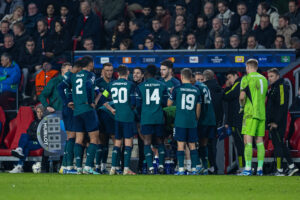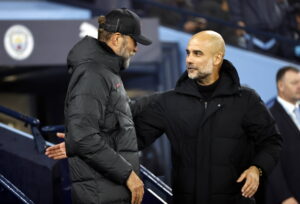Gareth Southgate and the English squad finished in fourth place this past summer during the 2018 World Cup tournament, and regardless of whether their actual campaign was a success or not (a matter of personal opinion), it was clear that the narrative and perspective around the national team had changed. People were excited about the fact that England had a young manager that was able to rally the country around the national team again. It was important that Southgate took that positivity and momentum into the UEFA Euro 2020 qualifiers. England started off their qualifying campaign at Wembley against the Czech Republic followed by an away trip to Montenegro. Both games ended in wins for the Three Lions, scoring ten goals and only conceding one across the two matches. Southgate, who was quite limited regarding options due to injuries, opted for a 4-3-3 formation, which is arguably a better fit than the 3-5-2 shape used at the World Cup.
Gareth Southgate’s Changes Since the World Cup
How the 4-3-3 Suits England’s Attacking Players
The 4-3-3 formation allows three pure attackers rather than two, which makes it easier to pin back the opposition’s defence. This also takes the pressure off of Harry Kane to be the only goal scoring threat in the team. With two other attacking players around him, Kane is free to drop in a bit deeper. This allows him to dictate play and pick a pass to the two other wingers. Raheem Sterling’s first goal against the Czech Republic showcased this perfectly. Kane is able to pick a perfect pass to Jadon Sancho, which he squared to Sterling to net.
Sterling has also shown throughout his club career, particularly at Manchester City, that his strengths are most suited to him playing as a winger. He looks much more effective cutting inside, or running from outside to in, rather than starting centrally. Starting him wide gives him more options. In all three of his goals against the Czech Republic, as well as the chance in which he won a penalty, he started from a wider position. He was also able to register an assist from a wide position during the Montenegro match, setting up Kane for a simple tap-in.
Kane, Sancho, and Sterling are not the only three who benefit from playing with an attacking three formation. Callum Hudson-Odoi was able to register an assist during the Montenegro match by starting out wide and cutting in. Even Marcus Rashford, who withdrew from the squad due to injury, plays much better for Manchester United either as a lone striker or a wide player.
How the 4-3-3 Suits England’s Midfield
The 3-5-2 worked well against smaller teams that would allow England possession. However, during the semi-finals of the World Cup, its flaws were highlighted. Due to the lack of wingers in a 3-5-2, any team coming up England playing this formation would have a lot of space for their full-backs to exploit. This is exactly what Croatia did. It forced England’s three midfielders to essentially have two responsibilities: moving wide to try and stop the full-backs and dealing with the opposition’s midfielders. This was the glaring problem in the semi-final. Croatia got the time and the space to dominate the midfield because England’s wide midfielders would often be caught out covering the full-backs. More often than not, Jordan Henderson was left to deal with Luka Modrić and Ivan Rakitić all by himself.
Eric Dier was injured early on during the Czech Republic match. Therefore, Henderson, Dele Alli and Ross Barkley played most of the game in midfield. The change of formation allowed Henderson to sit deep as a holding midfielder. This freed up Alli and Barkley to move forward because the protection from Sterling and Sancho ensured that they did not have to worry about the Czech Republic’s full-backs. The perfect example of this comes from Sterling’s hat-trick goal. Barkley received the ball deep, yet he is free to drive the ball forward and assist Sterling. He does not have to be as wary of what happens if he loses possession since the Czech Republic were so pinned back.
Barkley was able to do this again during the Montenegro match. He scored twice from inside the box because he was able to roam forward, and not worry about his defensive duties.
How the 4-3-3 Suits England’s Defence
Both the Czech Republic and Montenegro were not great offensively, so it is hard to judge the English back four on their defensive display. However, it is easy to notice that using a back four much better suits the English players much better than a back three with wing-backs. All of the English full-backs are used to playing in a back four, bar Kieran Trippier. Kyle Walker played as a third centre-back during the World Cup, which limits his greatest quality: driving forwards down the flank and acting as another creator, something he did often during both matches. This is also one of Trent Alexander-Arnold‘s strongest attributes, who will be looking to get a few more starts for the national team.
It is unlikely that Harry Maguire and Michael Keane will be England’s starting centre-backs. Both will have to compete with John Stones and Joe Gomez. However, both proved that they were adequate backups. Maguire was by targeted Matěj Vydra, something the Czech striker admitted he would be doing before the match. He handled him well, though, limiting him to one shot which was off target. Keane did make a mistake during the Montenegro match, not clearing the ball properly, which led the opposition’s first and only goal. Keane is not the only one to blame, as Hudson-Odoi did lose his man in the build up as well. Keane also made up for it by scoring the equalizer and remaining defensively solid for the rest of the match.
Final Points
England will face much bigger tests than the Czech Republic and Montenegro. However, England’s tactics have greatly improved since the World Cup. Southgate will be looking to go into the Nations League semi-final with lots of momentum.
Main Photo






